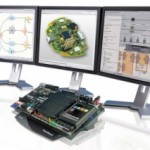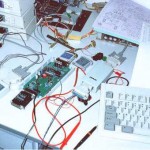Here at the LX Group we have a wide variety of experience and expertise in helping organisations and individuals move their ideas and electronics prototypes into products and solutions. During this time we have developed methods of decreasing the time and budget required to develop prototypes, and distilled this into a system we call the LX Hardware Compiler. This is a mixture of our engineering expertise and advice combined with a range of pre-built electronic modules.
At this point we’re very proud to announce to the public the availability of a wide range of electronic modules that form part of the LX Hardware Compiler via our new online store – located at
https://lx-group.com.au/solutions/. Using the modules is easy and will save you time, money and accelerate your prototype design.
How? It’s simple. Browse through the range of modules to find a particular function that forms part of your circuit – for example a power supply, real-time clock or a level converter. You can review the data sheet for the major component of the circuit, and also download the Altium file to integrate the module into your parts library. Each module is designed to be placed on a PCB just like any surface-mount component. Once selected, the module(s) can easily be added to your prototype circuit, then once the PCB returns from the board house – simply drop in the module and solder it to the PCB.
At launch we have just over fifty modules available, in the following categories:
- Analogue – such as OpAmps
- Audio – including digital audio, MP3, amplifier and MEMS microphone units
- Display – a great full-colour OLED module
- Drivers – starting with our dual DC motor driver modlue
- I/O Peripherals – including port expanders, multiplexers and optoisolators
- Memory – add flash memory or a microSD card interface
- Processors – a range of popular microcontrollers from various vendors
- Programmable Logic – starting with Altera CPLD modules
- Power supplies – a wide range of single, dual, SMPS and linear supplies and voltage references
- Sensors – measure temperature, current, position heading and more
- Switching – a variety of solid-state relays and FET switch modules
- Wired communications – add Ethernet and USB easily
- Wireless communications – including Wi-Fi, GSM/GPRS and Infrared receiver modules
- Miscellaneous – starting with accurate real-time clocks and user-input
By using our range of modules wherever possible you can “let us do the work”, so you don’t have to spend the time designing your own common circuits or attempt to source parts in low volume at a good price – letting you can get on with your project and bringing it to life.
To get started, click here to visit our new online store and start exploring how our modules can fit in with your design. Or for more information and a confidential discussion about your ideas and how we can help bring them to life – click here to contact us, or telephone 1800 810 124.
LX is an award-winning electronics design company based in Sydney, Australia. LX services include full turnkey design, electronics, hardware, software and firmware design. LX specialises in embedded systems and wireless technologies design. https://lx-group.com.au
Published by LX Pty Ltd for itself and the LX Group of companies, including LX Design House, LX Solutions and LX Consulting, LX Innovations.






